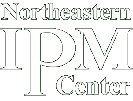IPM Education at Vermont's Largest Greenhouse Facility
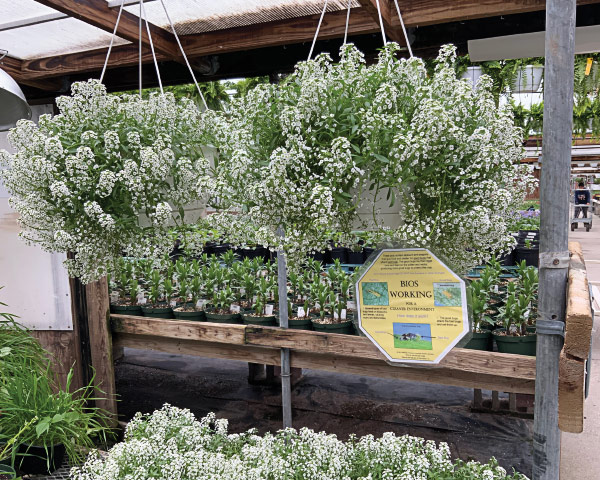 |
|
These pots contain alyssum and peppers that give food and shelter for the Orius predatory bug. Photo: Lori King. |
By Lori King, IPM manager, Claussen’s Florist, Greenhouse & Perennial Farm
I first learned about using Integrated Pest Management (IPM) in greenhouses about 25 years ago through the Tri-State Greenhouse IPM Workshops offered by the University of Vermont (UVM), Entomology Research Laboratory. IPM is the practice of using a combination of strategies, like natural predators (biocontrols), to prevent and manage pests while minimizing the use of chemical pesticides. Learning about using natural predators to combat the pest problems was exciting and a new alternative approach to relying solely on chemicals. There are several advantages to using biocontrols: They are safer for employees and customers and better for the environment.
After attending the initial workshops, we decided to develop and implement a biocontrol program at Claussen’s Florist, Greenhouse & Perennial Farm in Colchester, VT. Our facility spans 500,000 square feet when in full production. Since opening our doors in 1972, we had relied exclusively on chemical pest control until adopting biocontrols.
Educating our staff about biocontrols remains a top priority. Each year, I conduct a “Show-and-Tell” meeting with new employees to explain the biocontrol program. This includes identifying natural predators, recognizing parasitized pests, and understanding the time frames for different processes. We emphasize that a few pests must remain to sustain the biocontrols, and if necessary, we use soft chemicals as a last resort.
Banker Baskets
A key part of our IPM program is the use of “banker baskets.” These are mobile, open rearing systems for natural predators. One type of banker system we use involves the Aphidius wasp, which targets aphids. This system begins by introducing bird cherry-oat aphids on organic wheat, barley, or rye in newly planted baskets. Once these aphids populate the baskets, we place them in the greenhouse, where Aphidius wasps feed on and reproduce with the pest aphids. Within two weeks, new wasps emerge and search for additional pests. To prevent the aphids from spreading to monocot plants, we hang the banker baskets away from these crops.
After several unsuccessful attempts to rear these baskets within our greenhouses—due to the efficiency of Aphidius in collapsing the system too quickly—we partnered with the local high school’s Vocational Department of Natural Resources. Now, high school students create and maintain the banker baskets. Each week, fresh baskets are delivered to Claussen’s, allowing students to learn about biocontrols and the predator-prey relationship. At the end of the school year, students tour our facility to see their banker baskets in action, offering them firsthand experience with alternative pest management methods.
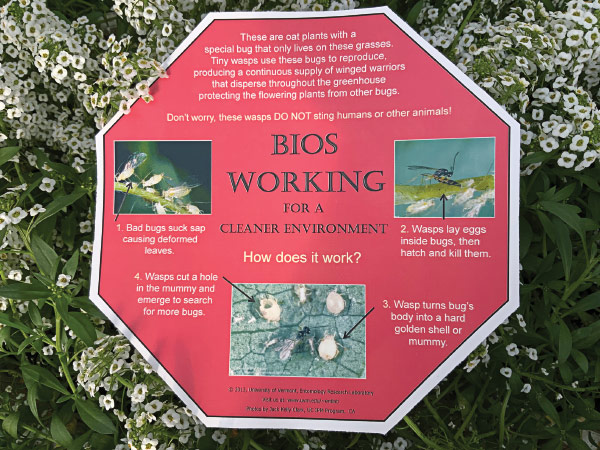 |
|
Signs inform greenshouse customers about the biocontrol process. Photo: Lori King. |
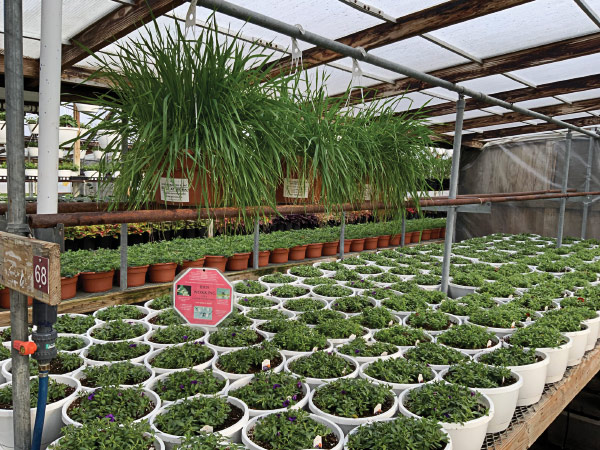 |
|
The Aphidius banker basket system. Photo: Lori King. |
We also use banker baskets made of Lobularia (alyssum) or a combination of Lobularia and Purple Flash pepper to support the Orius predatory bug. Orius is a generalist predator that consumes various pests and can sustain itself on Lobularia and pepper pollen when pest populations are low. Informational picture signs are displayed on all banker baskets to educate customers about the biocontrol process, providing them with a chance to see the process in action!
Growing banker baskets offers many benefits. They provide a continuous supply of natural predators to manage pests. When pest populations are low, the banker baskets sustain the biocontrols, ensuring a consistent presence throughout the growing season. Additionally, these baskets attract other beneficial insects that further aid in pest control.
Beyond our partnership with high school students, we offer facility tours and educational programs on biocontrols for students of all ages, from elementary to college. Each spring, I also host a “Grower to Grower” tour for local growers. We discuss current greenhouse conditions, pest issues, scouting methods, and biocontrol strategies. A specialist from the UVM Entomology Research Lab and a biocontrol representative often co-host the tour, providing additional expertise. In addition, I host public “Behind the Scenes” tours, allowing customers and visitors to explore our facility, learn about biocontrols, and observe live specimens in our banker baskets. I am proud to participate in UVM’s Tri-State Greenhouse IPM Workshop as an active speaker, sharing my IPM experiences with growers from Vermont, New Hampshire, and Maine. I also enjoy traveling to other greenhouses to share my knowledge and promote IPM and biocontrol.
Since implementing biocontrol at Claussen’s nearly two decades ago, we have reduced our chemical usage by 90 percent. I am deeply grateful to Cheryl Frank Sullivan and Margaret Skinner of the UVM Entomology Research Lab for their invaluable support and to Chris Conant for trusting me to develop Claussen’s successful biocontrol program.
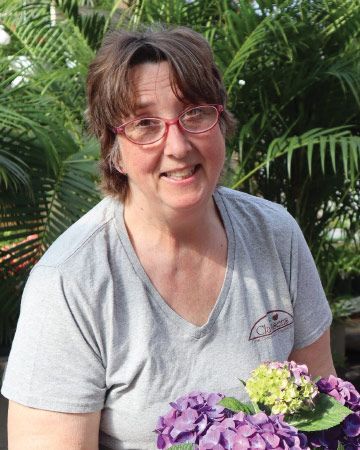 |
Lori King
Lori King, IPM manager, Claussen’s Florist, Greenhouse & Perennial Farm (www.claussens.com), received the Outstanding Achievements in Integrated Pest Management Award from the Northeastern IPM Center in 2022. The annual award, launched in 2019, recognizes individuals or organizations whose work on IPM in the Northeast deserves special recognition.
More details can be found at neipmc.org/go/ApbM.
